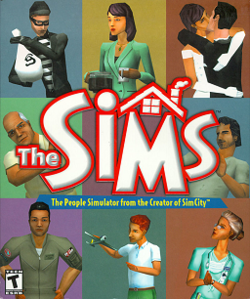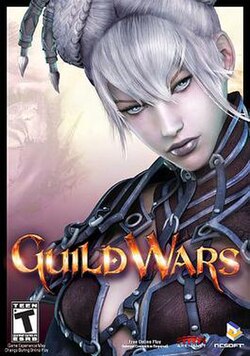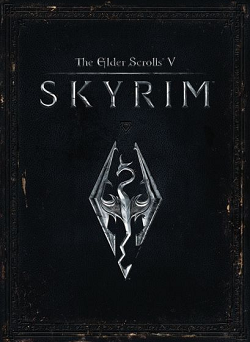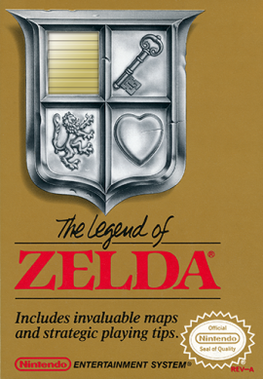 Doom
Doom (typeset as
DOOM in official documents)
[1] is a
1993 science fiction horror-themed
first-person shooter (FPS) video game by
id Software.
It is considered one of the most significant and influential titles in
video game history, for having pioneered the now-ubiquitous first-person
shooter. The original game was divided into three nine-level episodes
and was distributed via
shareware and
mail order.
The Ultimate Doom, an updated release of the original game featuring a fourth episode, was released in 1995 and sold at retail.
In
Doom, players assume the role of an unnamed
space marine, who became popularly known as "
Doomguy", fighting his way through hordes of invading demons from
Hell.
[2] With one third of the game, nine levels, distributed as
shareware,
Doom was played by an estimated 15–20 million people
[3] within two years of its release, popularizing the mode of gameplay and spawning a
gaming subculture. In addition to popularizing the
FPS genre, it pioneered immersive
3D graphics, networked
multiplayer gaming, and support for customized additions and modifications via packaged files in a data archive known as "
WADs".
As a sign of its effect on the industry, first-person shooter games
from the genre's boom in the 1990s, helped in no small part by the
game's release, became known simply as "
Doom clones". Its graphic violence, as well as satanic imagery, made
Doom the subject of considerable
controversy.
The
Doom franchise was later continued with the follow-up
Doom II: Hell on Earth (1994) and numerous
expansion packs, including
Master Levels for Doom II (1995), and
Final Doom (1996). Originally released for
PC DOS, the games have later been
ported to numerous other platforms. Once the game's
source code
was released in 1997, it spawned even more adaptations, as fans further
ported the code to countless devices. The series started to lose
mainstream appeal as the technology of the
Doom game engine was surpassed in the mid-1990s, although fans have continued making
WADs,
speedruns, and modifications to the original. The franchise again received popular attention in 2004 with the release of
Doom 3, a retelling of the original game using
id Tech 4, with an associated 2005
Doom motion picture. Another release, simply titled
Doom and powered by
id Tech 6, was released in 2016 and focused on returning to fast paced action of the first two games.
From Wikipedia, the free encyclopedia
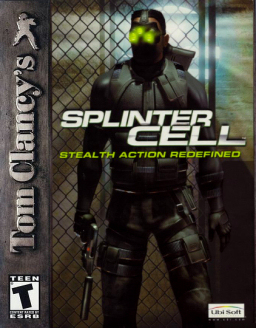 The game is available for Xbox, Microsoft Windows, PlayStation 2, GameCube, and Mac OS X.[1][2] 2D versions of the game were released for the Game Boy Advance and N-Gage (the latter as Tom Clancy's Splinter Cell: Team Stealth Action),[3] as well as the mobile phones version developed by Gameloft.[4] A remastered "high definition" version of Tom Clancy's Splinter Cell was released on the PlayStation 3 in September 2011. The success of the game series spawned a series of novels written under the pseudonym David Michaels.
The game is available for Xbox, Microsoft Windows, PlayStation 2, GameCube, and Mac OS X.[1][2] 2D versions of the game were released for the Game Boy Advance and N-Gage (the latter as Tom Clancy's Splinter Cell: Team Stealth Action),[3] as well as the mobile phones version developed by Gameloft.[4] A remastered "high definition" version of Tom Clancy's Splinter Cell was released on the PlayStation 3 in September 2011. The success of the game series spawned a series of novels written under the pseudonym David Michaels.

